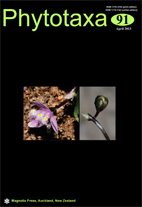Abstract
A phylogenetic analysis based on combined DNA sequences of the partial matK gene and the rpl16 intron showed that the rare alpine endemic Fritillaria tubiformis subsp. moggridgei (Liliaceae) and the more widespread F. tubiformis var. burnatii are exclusively related. A genetic study used plastid DNA markers, due to limits imposed by nuclear DNA fingerprinting in species with large genomes, to study variation within and between populations. Five length-variable homopolymer repeats (polyA and polyT) and four regions with one or two insertion/deletions (indels) of different lengths were identified. Of the total of 56 plastid haplotypes obtained, 32 were fixed in the seven populations of subsp. moggridgei and the rest were variable in var. burnatii. Analysis of molecular variance (AMOVA) showed higher genetic variation among rather than within subsp. moggridgei populations. Indel mutations, on the other hand, were fundamental in distinguishing the two taxa.

